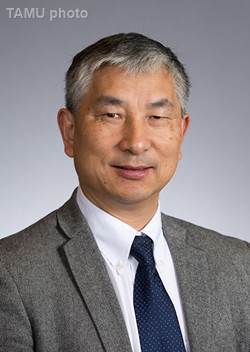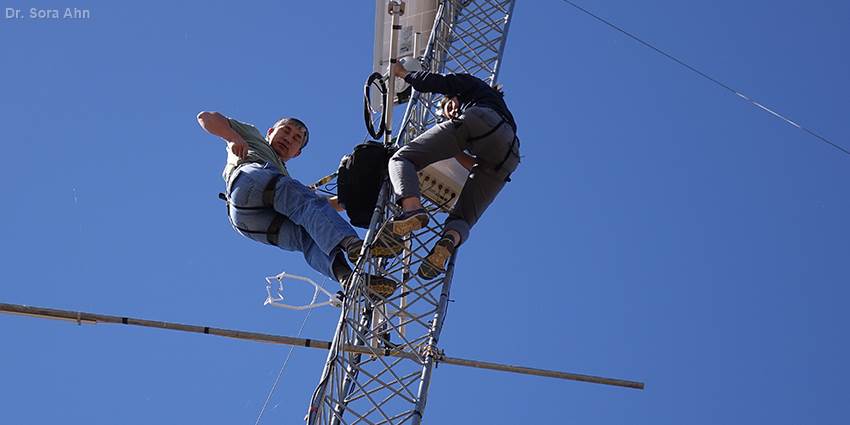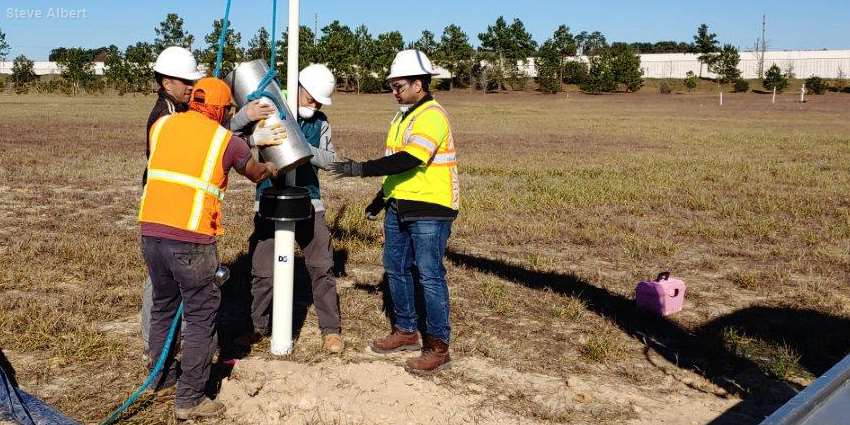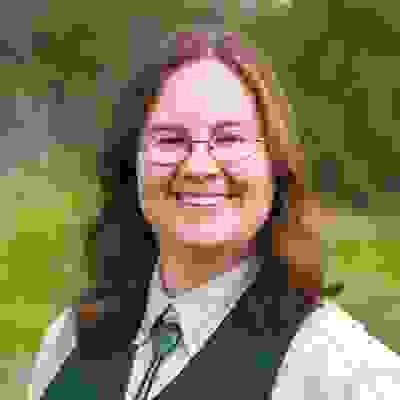Using technology and engineering to give good, practical answers to water users’ questions is one of the joys of the job for Dr. Zhuping Sheng.
As the center director of the Texas A&M AgriLife Research Center at El Paso, Sheng oversees operations and supports faculty members in their research programs. These programs often revolve around water resources and the needs of water users in arid West Texas.

“In this area we have both surface water from the Rio Grande and groundwater from regional aquifers,” he said. The river and those aquifers — primarily the Hueco-Mesilla Bolson Aquifer — cross Texas’ borders into Mexico and New Mexico, making usage and management transboundary concerns.
“Our surface water is primarily used for agricultural production, and El Paso water utilities use surface water and groundwater for its municipal supplies. On the Mexico side, Juárez relies solely on groundwater for its municipal supply. Irrigation is surface water, treated wastewater and groundwater too.”
Water and its various usages were a constant in Sheng’s life growing up as well a current concern.
“I was born in southern China where we have plenty of water,” Sheng said. “It was part of our daily life.”
Among other things, this meant playing, swimming and fishing in the Tonglv Canal, a flood control and irrigation channel of the Yangtze River, as a child. The river was also the source of most water for everyday needs, from drinking to washing. Groundwater from hand-dug wells provided most of the water for cooking. Sheng’s father even worked at the local irrigation district and eventually became the district’s manager.
Water was still central to Sheng’s life when he went to college at Shanghai’s Tongji University even though he was more interested in the geotechnical side of his hydrogeology/engineering geology program.
“My advisor at Tongji said, ‘We’re going to have a graduation project for you more on the water side.’”
After graduating from Tongji University in 1983 with his bachelors’ degree in hydrogeology and engineering geology, Sheng went to the Chinese Academy of Sciences in Beijing for his master’s degree in engineering geology and hydrogeology.
Sheng said the major change for him came when he started his doctorate at the University of Nevada-Reno for hydrology and hydrogeology. There he finally got to focus more on the integration of geotechnical engineering and hydrogeology that really excited him. Geotechnical engineering combines scientific and engineering principles to manage and work with soil, rock and water.
From there, Sheng spent a brief time in Baltimore, Maryland before moving to El Paso in 1998 where he got to work as a hydrogeologist for the El Paso Water Utilities.
“It was really interesting, rewarding experience for me,” Sheng said. “I really got more interested, even more than when I was working on my dissertation because it was more about the water resources.”
In 2001, Sheng was offered a faculty position at Texas A&M University. He became the director of the AgriLife Center at El Paso in 2017.
But Sheng’s attention is not only on El Paso these days.
“Recently, I’ve been working on subsidence issues and aquifer storage and recovery in the Houston area,” he said.
Subsidence is when land sinks or caves in. Subsidence can affect small, localized areas — think a sinkhole — or large areas, including entire cities. It can be due to natural causes or human activity like pumping too much groundwater.
“Shanghai is a typical place for land subsidence caused by groundwater pumping; the city pumped too much groundwater historically,” Sheng said. “But it also has a very successful story for controlling this. In the city area, it cannot pump anymore but it also injects water back into the aquifer.”
Sheng explained that managed aquifer recharge — putting water back in the aquifer can help slow down or even stop subsidence if properly designed and implemented.
“That’s what Texas is looking at,” Sheng said. “I’ve got one project working with Dr. Gretchen Miller and Binkley & Barfield Consulting Engineers. We are looking at the potential to capture stormwater and then recharge the aquifer in Harris County.”

An aquifer is basically an underground reservoir, Sheng explained.
“Remember, when an aquifer has been pumped, you have more space in the geologic formation. You can put more water back. If we design things well, you just use the aquifer or geologic formation as a storage space, like a reservoir.”
As with most reservoirs, the big questions Sheng gets from water users are: “How much is there?” and “How much can I use?” Providing good-quality, meaningful, usable answers to those questions is one of his central goals.
“When they see the numbers, water users can use them for their decisions. Like how much water is available — they can make decisions about whether to grow this crop or not grow it.”
Sheng wants that information to be as accurate and useful as possible. Technology and teamwork are paving the way to that goal.
“With all this computer capacity and interdisciplinary work with scientists and researchers from regional institutes, agencies and organizations, we can develop models more capable of providing the information needed by stakeholders,” Sheng said. “Some of the information can be real time, and some information is more for preparation so they can make decisions about water today for the future.”
Sheng’s continuing goal is to provide good, usable hydrological information to water users. His joy is to see them use it. Producing more, better data can help make both of those things happen, and that is good for everyone, including the aquifers.
“With more data available, you have better understanding of the aquifer and more data available on the crops and on the watershed. So you have better understanding of the hydrological processes on the surface and in the ground,” Sheng said.
“So that’s what I’m hoping for: we have better technology and better information and can provide better understanding for stakeholders.”


